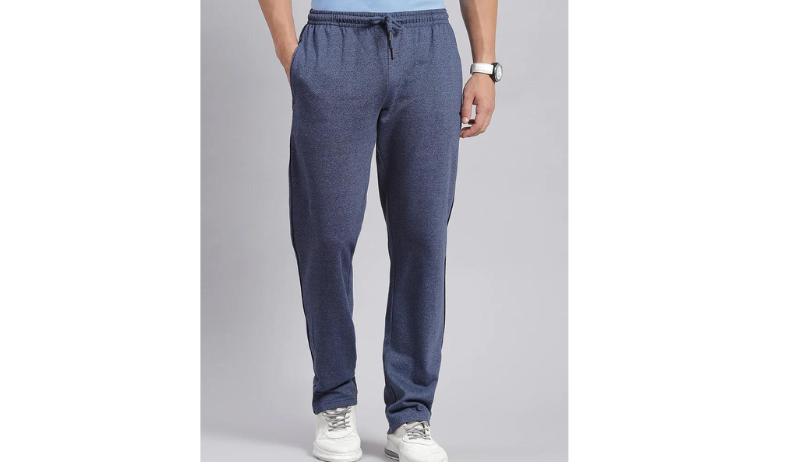
In a world increasingly aware of its environmental impact, the fashion industry is undergoing a transformative shift towards sustainability. Consumers are now seeking clothing options that not only make a style statement but also align with their values of eco-conscious living. When it comes to men’s lower wear, the choices are expanding, offering a plethora of eco-friendly alternatives that not only look good but also contribute to a healthier planet.
-
The Environmental Impact of Conventional Fashion
Before delving into sustainable options, it’s essential to understand the environmental toll conventional fashion takes. Traditional manufacturing processes for clothing, including men’s lower wear, often involve the use of toxic chemicals, excessive water consumption, and high energy inputs. Additionally, the fast fashion culture promotes disposable clothing, leading to an alarming increase in textile waste.
Polyester, a common material in many lower wear items, is derived from non-renewable resources and is not biodegradable. The fashion industry’s carbon footprint is substantial, and the negative impacts on ecosystems and human health are undeniable. As consumers become more conscious of these issues, there is a growing demand for sustainable alternatives.
-
Materials Matter: Choosing Sustainable Fabrics
One of the first steps towards eco-friendly men’s lower wear is opting for clothing made from sustainable materials. Organic cotton is a popular choice, as it is grown without the use of synthetic pesticides and fertilizers, reducing harm to the environment and preserving soil health. Additionally, organic cotton farming often relies on rain-fed irrigation, minimizing water consumption.
Another innovative option gaining traction is Tencel, a fabric made from sustainably sourced wood pulp, usually from eucalyptus trees. Tencel production involves a closed-loop process, meaning that the solvents used are recycled, making it a more environmentally friendly choice. Not only is Tencel biodegradable, but its soft and breathable nature also provides a comfortable and stylish option for men’s lower wear.
Hemp is another sustainable material with a rich history in textile production. Hemp requires minimal water and no pesticides to grow, making it a low-impact choice. The fabric is durable, breathable, and becomes softer with each wash, ensuring longevity in your wardrobe. Hemp-based men’s lower wear is not only environmentally friendly but also a versatile and stylish addition to any wardrobe.
-
Ethical Manufacturing: Supporting Fair Trade Practices
Choosing eco-friendly materials is only part of the sustainability equation. It’s equally crucial to consider the manufacturing processes and the social impact of the brands you support. Many sustainable fashion brands prioritize fair trade practices, ensuring that workers are treated ethically and paid fair wages.
When shopping for men’s lower wear, look for certifications such as Fair Trade or Global Organic Textile Standard (GOTS). These certifications guarantee that the entire supply chain, from raw material production to the final product, meets strict environmental and social standards. By supporting brands that prioritize ethical manufacturing, you contribute to a fashion industry that values both people and the planet.
-
Versatility and Timelessness: Building a Capsule Wardrobe
A sustainable approach to men’s lower wear extends beyond the materials and manufacturing to the design and functionality of the clothing. Building a capsule wardrobe with versatile, timeless pieces is an effective way to reduce the need for constant shopping and minimize fashion waste.
Investing in classic styles and neutral colors allows for easy mix-and-match, creating a variety of looks with a minimal number of clothing items. High-quality, durable fabrics ensure that your men’s lower wear withstands the test of time, reducing the frequency of replacements and contributing to a more sustainable wardrobe.
-
Upcycling and Second-Hand Shopping: Embracing Circular Fashion
For those looking to minimize their environmental footprint further, exploring second-hand options or engaging in upcycling can be rewarding. Thrift stores, online vintage shops, and clothing swaps provide an array of pre-loved men’s lower wear that is not only unique but also reduces the demand for new production.
Upcycling involves transforming old or discarded clothing items into something new and stylish. This creative approach not only reduces waste but also allows for a personal touch to your wardrobe. Consider revamping old jeans into shorts or creating custom designs with patches and embroidery to breathe new life into worn-out favorites.
-
Educating Yourself and Others: Advocacy for Sustainable Fashion
As a conscious consumer, staying informed about sustainable fashion practices empowers you to make more responsible choices. Stay updated on the latest developments in eco-friendly materials, ethical manufacturing, and sustainable fashion initiatives. Share your knowledge with friends and family, promoting a collective effort towards a more sustainable fashion industry.
Additionally, supporting and advocating for sustainable fashion initiatives can influence industry practices on a larger scale. Whether through social media, community events, or engaging with brands directly, your voice can contribute to the positive transformation of the fashion industry.
Conclusion: A Stylish and Sustainable Future for Men’s Lower Wear
Choosing eco-friendly men’s lower wear is a powerful way to make a positive impact on both the environment and the fashion industry. By opting for sustainable materials, supporting ethical manufacturing practices, and embracing a circular fashion approach, you can build a wardrobe that reflects your style while contributing to a healthier planet.
As sustainability becomes an integral part of the fashion conversation, the options for eco-friendly men’s lower wear will continue to expand. By making informed choices and advocating for positive change, you play a crucial role in shaping a more sustainable and stylish future for men’s fashion.






